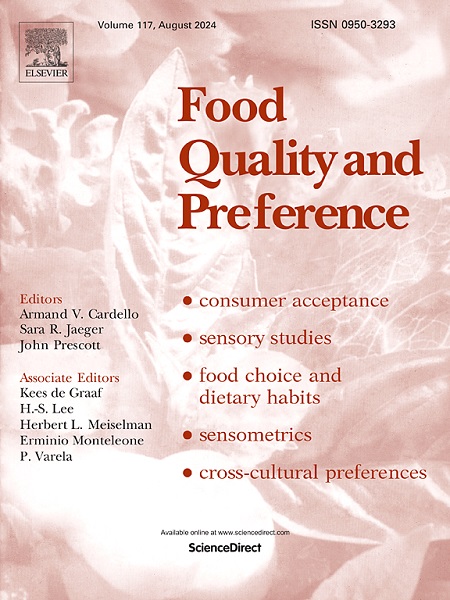Impact of carbon footprint of food production on consumer perceptions and attitudes: Insights from text highlighting
IF 4.9
1区 农林科学
Q1 FOOD SCIENCE & TECHNOLOGY
引用次数: 0
Abstract
This study evaluated the impact of carbon footprint information on consumer perceptions of food production, using the Text Highlighting (TH) technique to guide effective awareness, communication, and marketing strategies for more sustainable products. The research involved 100 participants aged 18 to 50, who were asked to read a brief, structured text explaining the concept of the carbon footprint, the environmental impact of food production, and industry efforts to reduce emissions. In the TH task, participants highlighted terms they “liked” or “disliked” within the text. They then answered questions assessing their knowledge of carbon footprints, ability to interpret this information, and willingness to pay more for products labeled with a carbon footprint indicator. The results indicated high engagement with the text, with most sentences receiving positive highlighting, especially those related to sustainable actions taken by companies. Overall, sentiment was positive, with participants appreciating clear and accessible explanations of carbon footprints, particularly in sections discussing actions for sustainable production. In contrast, negative sentiment was mainly observed in sections covering the simple definition of the carbon footprint and the naming of greenhouse gases, suggesting a more critical response to these technical aspects. The study further demonstrated that providing information on carbon footprints enhanced consumer awareness, as most participants reported feeling more knowledgeable and confident in interpreting carbon footprint labels after reading the text. However, willingness to pay a premium for carbon-labeled products was mixed, suggesting that awareness alone may not be sufficient to drive purchasing behavior.
食品生产碳足迹对消费者认知和态度的影响:来自文本突出显示的见解
本研究评估了碳足迹信息对消费者对食品生产认知的影响,使用文本突出显示(TH)技术来指导更可持续产品的有效意识、沟通和营销策略。这项研究涉及100名年龄在18岁到50岁之间的参与者,他们被要求阅读一篇简短的结构化文章,解释碳足迹的概念、食品生产对环境的影响以及行业为减少排放所做的努力。在第三项任务中,参与者在文本中突出他们“喜欢”或“不喜欢”的术语。然后,他们回答了一些问题,评估他们对碳足迹的了解程度、解读这些信息的能力,以及是否愿意为标有碳足迹指标的产品支付更高的价格。结果表明,学生对文本的参与度很高,大多数句子都得到了积极的强调,尤其是那些与公司采取的可持续行动有关的句子。总体而言,与会者的情绪是积极的,与会者欣赏对碳足迹的清晰易懂的解释,特别是在讨论可持续生产行动的部分。相比之下,负面情绪主要出现在涵盖碳足迹的简单定义和温室气体命名的部分,这表明对这些技术方面的反应更为关键。该研究进一步证明,提供碳足迹信息可以提高消费者的意识,因为大多数参与者报告说,在阅读文字后,他们在解读碳足迹标签时感到更有知识和信心。然而,为碳标签产品支付额外费用的意愿参差不齐,这表明仅凭意识可能不足以推动购买行为。
本文章由计算机程序翻译,如有差异,请以英文原文为准。
求助全文
约1分钟内获得全文
求助全文
来源期刊

Food Quality and Preference
工程技术-食品科技
CiteScore
10.40
自引率
15.10%
发文量
263
审稿时长
38 days
期刊介绍:
Food Quality and Preference is a journal devoted to sensory, consumer and behavioural research in food and non-food products. It publishes original research, critical reviews, and short communications in sensory and consumer science, and sensometrics. In addition, the journal publishes special invited issues on important timely topics and from relevant conferences. These are aimed at bridging the gap between research and application, bringing together authors and readers in consumer and market research, sensory science, sensometrics and sensory evaluation, nutrition and food choice, as well as food research, product development and sensory quality assurance. Submissions to Food Quality and Preference are limited to papers that include some form of human measurement; papers that are limited to physical/chemical measures or the routine application of sensory, consumer or econometric analysis will not be considered unless they specifically make a novel scientific contribution in line with the journal''s coverage as outlined below.
 求助内容:
求助内容: 应助结果提醒方式:
应助结果提醒方式:


